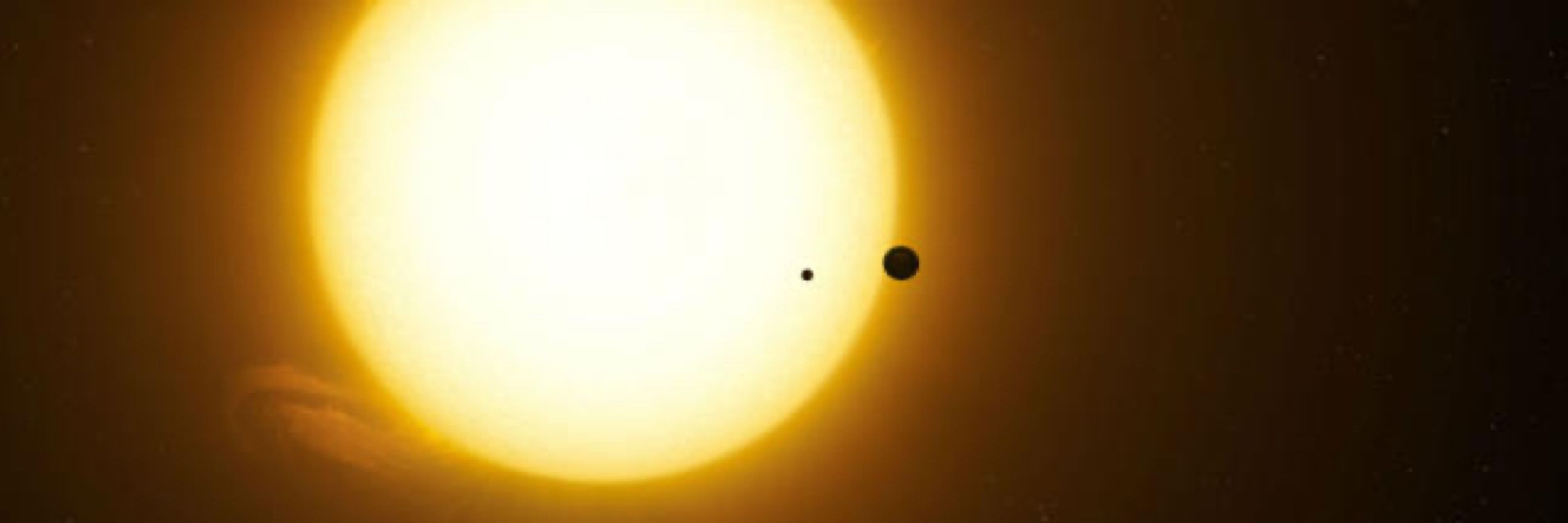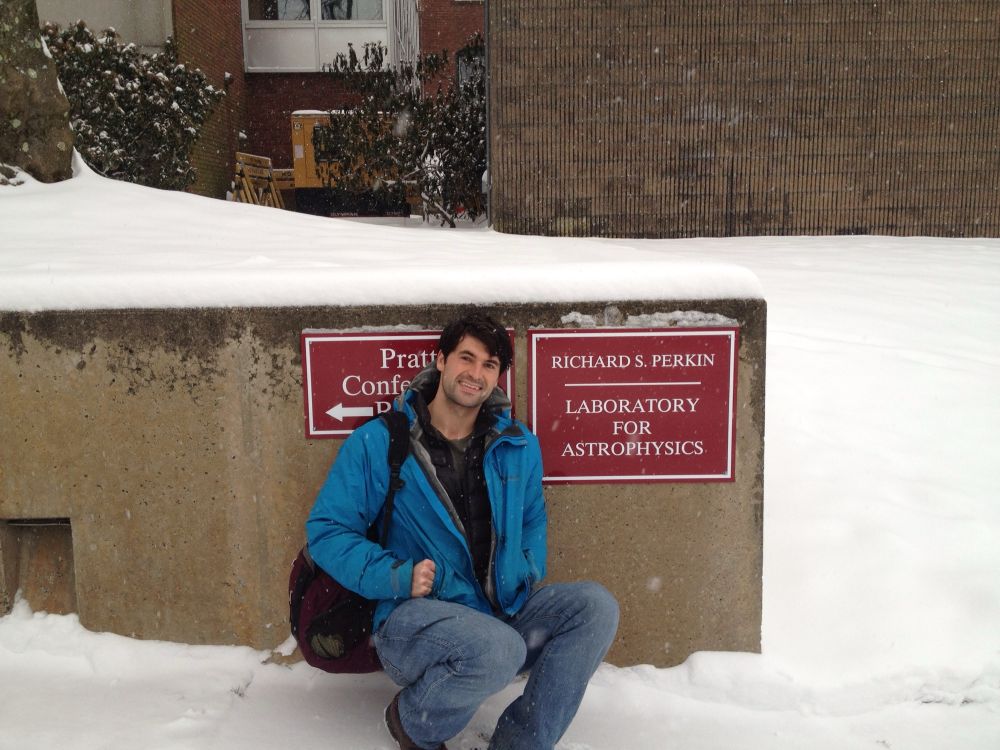
David Kipping
@davidkipping.bsky.social
Astronomy, Exoplanets, Astrobiology, Cool Worlds Lab, Columbia University. Be kind to one another.
Dr Ben Cassese
(from yesterday!)
(from yesterday!)

November 11, 2025 at 11:02 PM
Dr Ben Cassese
(from yesterday!)
(from yesterday!)
Contemplating existence in Amsterdam

October 18, 2025 at 8:44 PM
Contemplating existence in Amsterdam
I did a double take on that because I don't remember his original article saying this and fortunately I had printed it out. Indeed, it looks he has edited the blog post, so he is responsive! I would of course prefer a clear bold erratum at the top conceding the original version's issues.

October 7, 2025 at 9:08 AM
I did a double take on that because I don't remember his original article saying this and fortunately I had printed it out. Indeed, it looks he has edited the blog post, so he is responsive! I would of course prefer a clear bold erratum at the top conceding the original version's issues.
October 6, 2025 at 5:35 PM
Do cats also think that aliens will look like them?

October 4, 2025 at 6:51 AM
Do cats also think that aliens will look like them?
“If an explanation could easily explain anything, then it actually explains nothing. When theories are variable, experimental testing is useless. I call such theories bad explanations. Being proved wrong by experiment and changing to other bad explanations does not get one jot closer to the truth.”

September 9, 2025 at 6:53 PM
“If an explanation could easily explain anything, then it actually explains nothing. When theories are variable, experimental testing is useless. I call such theories bad explanations. Being proved wrong by experiment and changing to other bad explanations does not get one jot closer to the truth.”
New studies used JWST to probe TRAPPIST-1e, the most accessible potential Earth-like exoplanet. Data reveals the atmosphere is
1) Not hydrogen dominated (unsurprising)😌
2) Unlikely to be Venus-like🧐
3) Compatible with N2-rich😎
arxiv.org/abs/2509.05407
arxiv.org/abs/2509.05414
1) Not hydrogen dominated (unsurprising)😌
2) Unlikely to be Venus-like🧐
3) Compatible with N2-rich😎
arxiv.org/abs/2509.05407
arxiv.org/abs/2509.05414

September 9, 2025 at 8:48 AM
New studies used JWST to probe TRAPPIST-1e, the most accessible potential Earth-like exoplanet. Data reveals the atmosphere is
1) Not hydrogen dominated (unsurprising)😌
2) Unlikely to be Venus-like🧐
3) Compatible with N2-rich😎
arxiv.org/abs/2509.05407
arxiv.org/abs/2509.05414
1) Not hydrogen dominated (unsurprising)😌
2) Unlikely to be Venus-like🧐
3) Compatible with N2-rich😎
arxiv.org/abs/2509.05407
arxiv.org/abs/2509.05414
The magnetic field produces in this configuration could actually be useful in its own right, such as providing protection to a Mars base for example. And given these things weigh just ~kg, made of existing materials and powered solely by the Sun, we could make a lot of them.
July 26, 2025 at 4:17 PM
The magnetic field produces in this configuration could actually be useful in its own right, such as providing protection to a Mars base for example. And given these things weigh just ~kg, made of existing materials and powered solely by the Sun, we could make a lot of them.
We speculated that even faster speeds could be obtained by electrically charging the tips, providing a restoring force. This creates a rotating dipole that radiates and the new terminal speed is set by energy balance, and is ~1000 km/s (0.3% c!) - again just using the Sun!
July 26, 2025 at 4:17 PM
We speculated that even faster speeds could be obtained by electrically charging the tips, providing a restoring force. This creates a rotating dipole that radiates and the new terminal speed is set by energy balance, and is ~1000 km/s (0.3% c!) - again just using the Sun!
A chipsat, similar to that proposed by Breakthrough Starshot, is released just before breakup, flying off in a tangential trajectory out of the Solar System. In principle we could boost the speeds by using eccentric orbits + Oberth effect, graphene sheets and gravity assists.
July 26, 2025 at 4:17 PM
A chipsat, similar to that proposed by Breakthrough Starshot, is released just before breakup, flying off in a tangential trajectory out of the Solar System. In principle we could boost the speeds by using eccentric orbits + Oberth effect, graphene sheets and gravity assists.
After ~3 years @ 1AU, TARS would spin up to 12.1 km/s which is the critical velocity when the centrifugal force exceeds the tensile strength of the CNT sheets. Adding on the quasite orbital velocity, the ends are moving at 40.4 km/s - exceeding the Sun's escape velocity.
July 26, 2025 at 4:17 PM
After ~3 years @ 1AU, TARS would spin up to 12.1 km/s which is the critical velocity when the centrifugal force exceeds the tensile strength of the CNT sheets. Adding on the quasite orbital velocity, the ends are moving at 40.4 km/s - exceeding the Sun's escape velocity.
The whole thing is scalable but our paper considers the example of a 63m x 7m x 2.6um design weighing 1.6 kg made of CNT sheets. The strange dimensions are required for stability against tumbling (T-handle effect). One could imagine TARS being folded up at launch then unfurling.
July 26, 2025 at 4:17 PM
The whole thing is scalable but our paper considers the example of a 63m x 7m x 2.6um design weighing 1.6 kg made of CNT sheets. The strange dimensions are required for stability against tumbling (T-handle effect). One could imagine TARS being folded up at launch then unfurling.
However, there's also an outward force trying to push TARS away from the Sun, which is bad since radiation pressure drops off as distance^2. So, we combat this by placing TARS in a "quasite" orbit, an idea I came up with in a previous paper: doi.org/10.3847/2515...
July 26, 2025 at 4:17 PM
However, there's also an outward force trying to push TARS away from the Sun, which is bad since radiation pressure drops off as distance^2. So, we combat this by placing TARS in a "quasite" orbit, an idea I came up with in a previous paper: doi.org/10.3847/2515...
The simplest way to understand TARS is to think about something like this, two thin paddles joined by a tether. One side is painted silver & the other dark, with opposite phases. The silver side feels 2x the radiation pressure as the dark side, and thus TARS feels a torque.
July 26, 2025 at 4:17 PM
The simplest way to understand TARS is to think about something like this, two thin paddles joined by a tether. One side is painted silver & the other dark, with opposite phases. The silver side feels 2x the radiation pressure as the dark side, and thus TARS feels a torque.
New paper! Allow me to introduce TARS = Torqued Accelerator using Radiation from the Sun. TARS (yes inspired by Interstellar!) is a rotating light sail that's capable of launching chip sats into interstellar space using only radiation from the Sun, so let's dive into how it works.
July 26, 2025 at 4:17 PM
New paper! Allow me to introduce TARS = Torqued Accelerator using Radiation from the Sun. TARS (yes inspired by Interstellar!) is a rotating light sail that's capable of launching chip sats into interstellar space using only radiation from the Sun, so let's dive into how it works.

June 9, 2025 at 11:20 AM
The Harvard visa ban is shooting ourselves in the foot. Harvard is a magnet of global talent. I was a predoc at Harvard & then a NASA Sagan fellow there before joining Columbia, so I am one of the many immigrants who was trained and drawn to the US by that incredible institution.

May 23, 2025 at 11:39 AM
The Harvard visa ban is shooting ourselves in the foot. Harvard is a magnet of global talent. I was a predoc at Harvard & then a NASA Sagan fellow there before joining Columbia, so I am one of the many immigrants who was trained and drawn to the US by that incredible institution.
Figure 1 from my new paper (arxiv.org/abs/2504.13238)

April 21, 2025 at 1:57 AM
Figure 1 from my new paper (arxiv.org/abs/2504.13238)
Where’s the 2.62 number? There’s a lot of Bayes factor around that level in this table but those are log Bayes factors, so the actual values are pretty decent

April 18, 2025 at 1:35 PM
Where’s the 2.62 number? There’s a lot of Bayes factor around that level in this table but those are log Bayes factors, so the actual values are pretty decent






